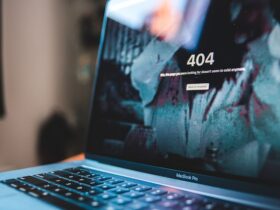A botnet is a network of compromised computers that can be used to carry out distributed denial of service (DDoS) attacks, among other malicious activities. The term “bot” comes from the word “robot,” and these networks are also sometimes called “zombie armies.” While botnets can be used for legitimate purposes, such as website testing or search engine indexing, they are most often associated with illegal activities. For example, a botnet might be used to launch a DDoS attack against a rival business or website. In this blog post, we will explore what a botnet is, how it works, and some of the most famous examples in history.
What is a botnet?
A botnet is a network of computers infected with malware that allows an attacker to control them remotely. The attacker can use the botnet to perform various tasks, such as launching denial-of-service attacks, stealing data, or sending spam.
Botnets are often used in conjunction with other attack tools, such as phishing campaigns or ransomware. For example, an attacker may use a botnet to send out mass emails containing a link to a malicious website. When victims click on the link, they may be redirected to a site that looks legitimate but is actually designed to steal their login credentials. Alternatively, they may be infected with ransomware that encrypts their files and demands a ransom payment for the decryption key.
While botnets can be used for legitimate purposes, such as managing large networks of computers, they are more commonly associated with criminal activity. In many cases, attackers will infect computers without the owner’s knowledge or consent. This can be done by tricking victims into clicking on malicious links or attachments, or by exploiting vulnerabilities in software. Once a machine is part of a botnet, the attacker has complete control over it and can use it for any purpose they see fit.
How do botnets work?
A botnet is a network of computers that have been infected with malware and are controlled by a malicious actor. The malware allows the attacker to remotely control the infected computers, using them to perform malicious actions, such as launching distributed denial of service (DDoS) attacks, stealing data, or sending spam.
Botnets can be very large, consisting of thousands or even millions of infected computers. The botnet’s size and power depends on how many computers have been infected and how they are connected. For example, a botnet might consist of many different types of devices, such as PCs, servers, laptops, smartphones, and IoT devices.
Botnets are often used to launch DDoS attacks. In a DDoS attack, the attacker instructs all the computers in the botnet to send traffic to a particular target, such as a website or server. The deluge of traffic overwhelzing data from security firm Kaspersky Lab’s sinkhole infrastructure for Command & Control servers showed that Mirai-based botnets were responsible for launching some of the largest DDoS attacks on record in 2016.
Examples of botnets
A botnet is a collection of internet-connected devices, which may include PCs, servers, mobile devices and internet of things devices, that are infected and controlled by a common type of malware. The term is derived from the word “robot” and originally referred to a network of infected computers that were used to carry out distributed denial of service (DDoS) attacks.
Today, botnets are often used for much more malicious purposes, such as stealing personal information, launching phishing campaigns and distributing ransomware. In many cases, the owners of the devices that make up a botnet are unaware that their device has been compromised.
Some notable examples of botnets include:
Mirai: Mirai was responsible for some of the largest DDoS attacks ever recorded, including an attack on Dyn, a major DNS provider, in October 2016 that took down major websites such as Twitter, Reddit and Netflix. The Mirai botnet was also used in January 2017 to launch a record-breaking DDoS attack on KrebsOnSecurity.com.
Wicked: Wicked is a botnet that was discovered in early 2018. It targets unsecured IoT devices and uses them to launch DDoS attacks.
What can botnets be used for?
Botnets can be used for a variety of tasks, including:
- Denial of service attacks
- Spreading malware
- Stealing sensitive data
- Engaging in click fraud
- Brute force attacks
How to protect against botnets?
A botnet is a network of infected computers that are controlled by a hacker. The computers in a botnet are usually owned by unsuspecting victims who have no idea that their machine has been compromised. Once a computer is part of a botnet, the hacker can use it to launch attacks on other computers, send spam email, or even steal personal information.
There are several things you can do to protect your computer from becoming part of a botnet:
- Keep your operating system and all software up to date. Hackers exploit security vulnerabilities in outdated software to take control of computers. By making sure your software is up to date, you close these security holes and make it more difficult for hackers to take over your machine.
- Use a firewall. A firewall helps protect your computer from outside attacks by blocking incoming traffic that may be harmful.
- Use anti-malware software. Anti-malware software helps detect and remove malicious software from your computer. Be sure to keep the malware definitions up to date so that the software can effectively protect against the latest threats.
Conclusion
A botnet is a network of private computers infected with malicious software and controlled as a group without the owners’ knowledge. For example, a botnet can be used to send spam or viruses, launch denial-of-service attacks, or even steal sensitive information like passwords and credit card numbers. The term “botnet” comes from the word “robot,” because these networks of infected computers are often referred to as zombies or bots. Botnets can be very large, with some estimates claiming there are millions of computers in a single botnet.











FIND US ON SOCIALS